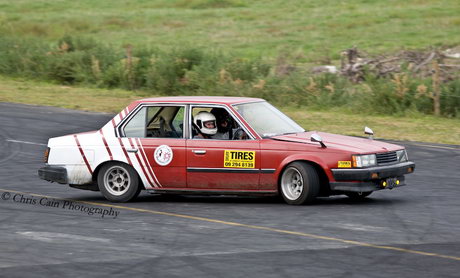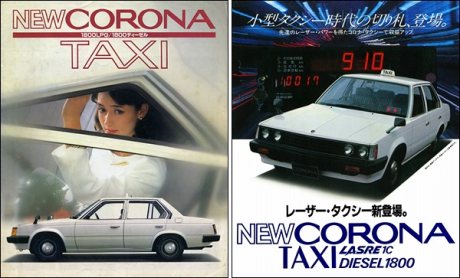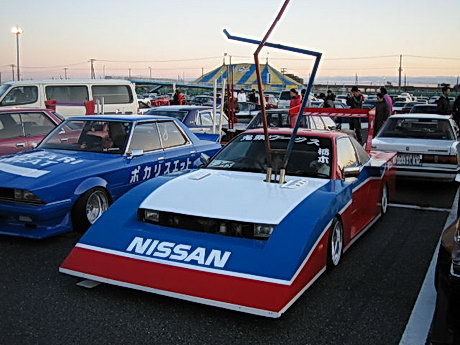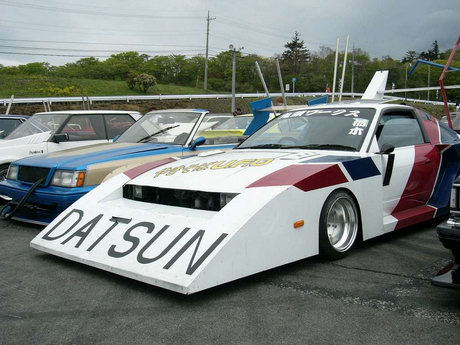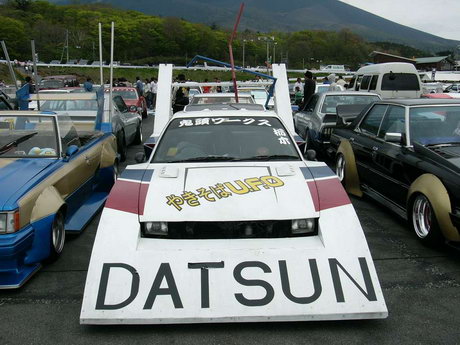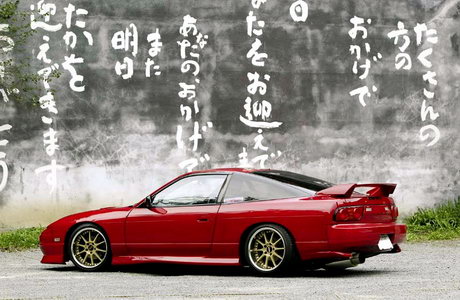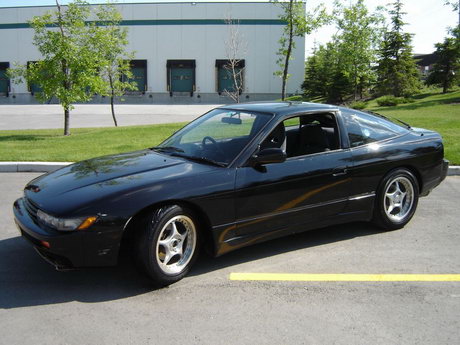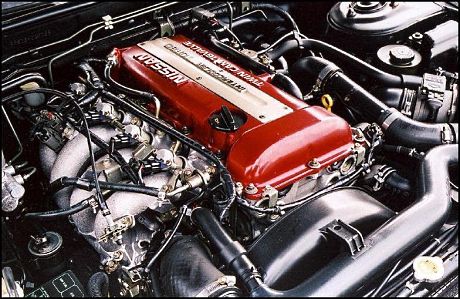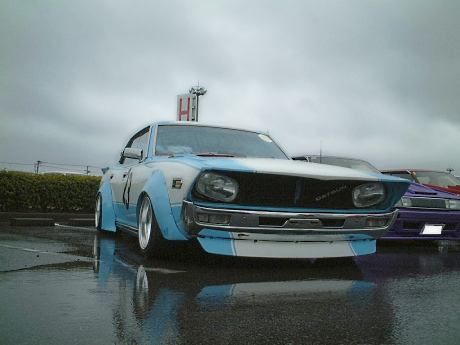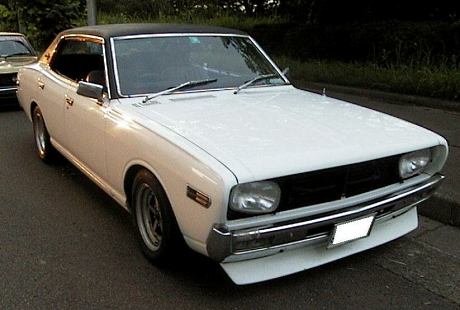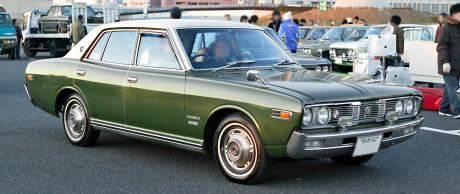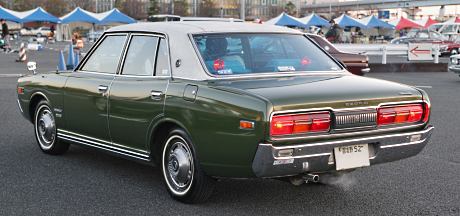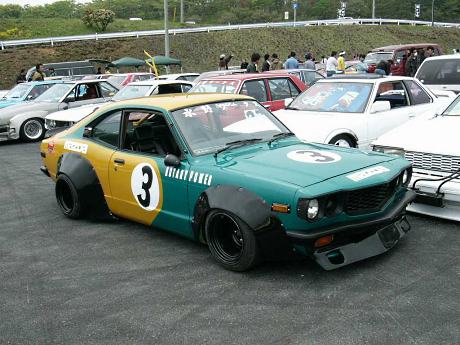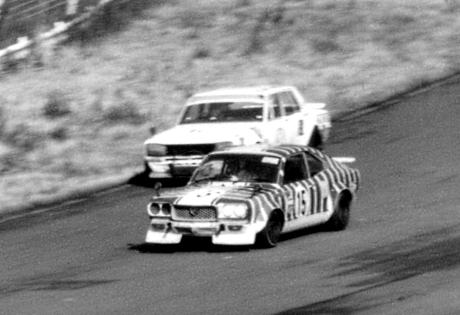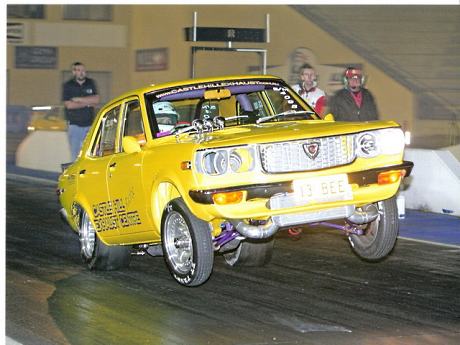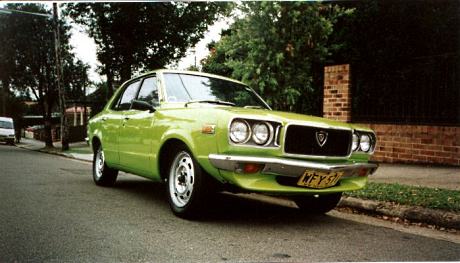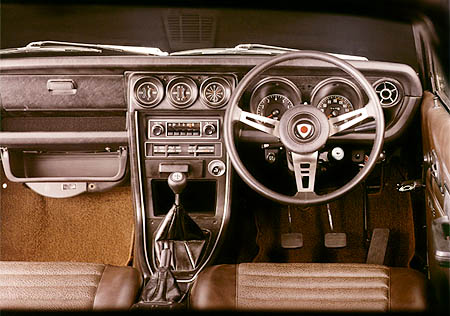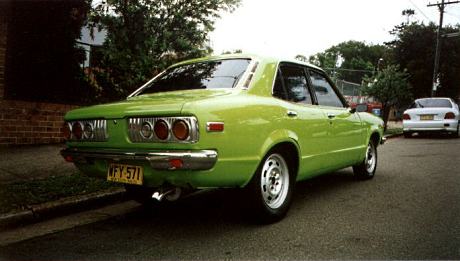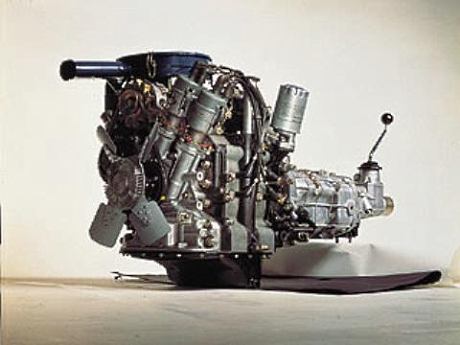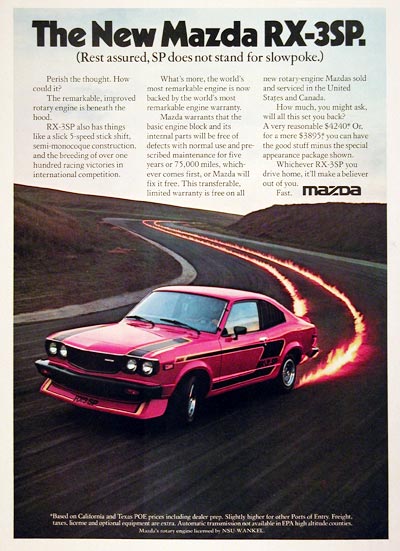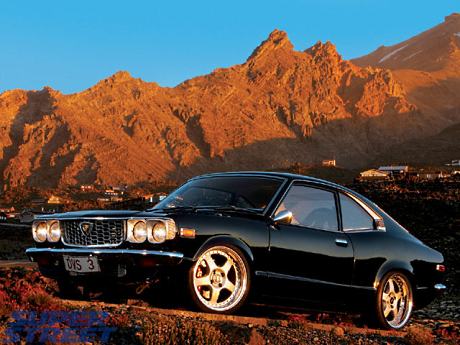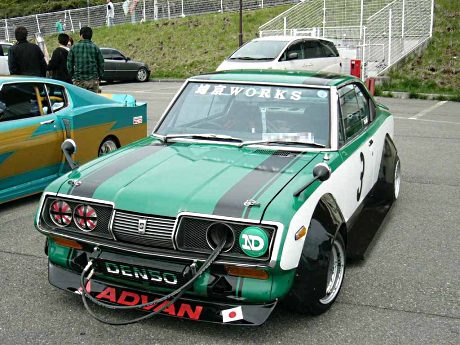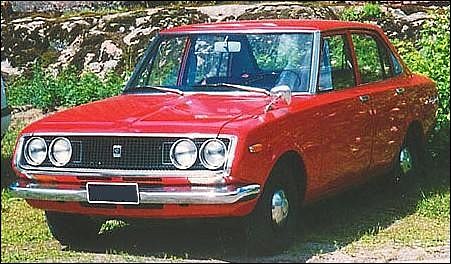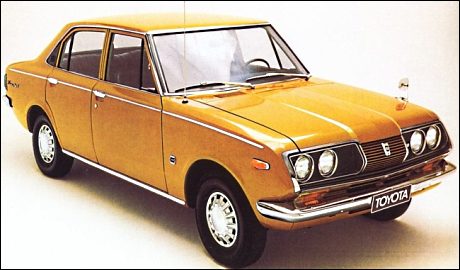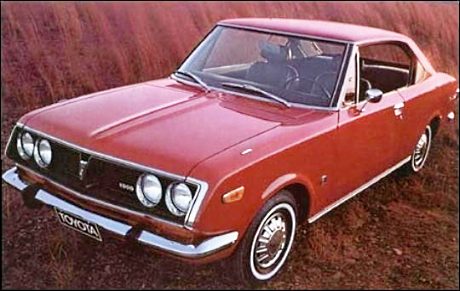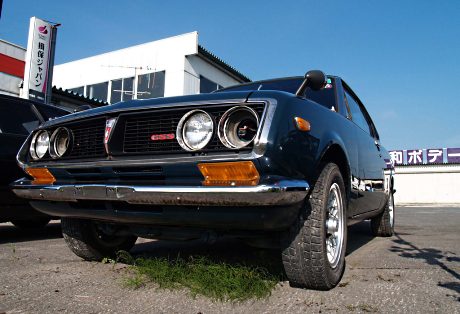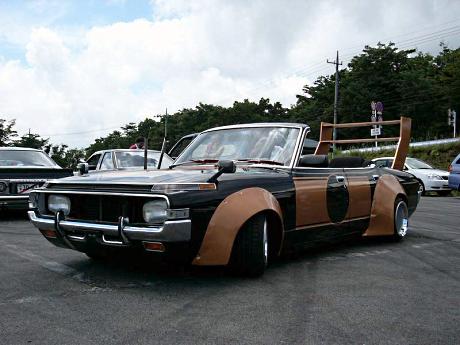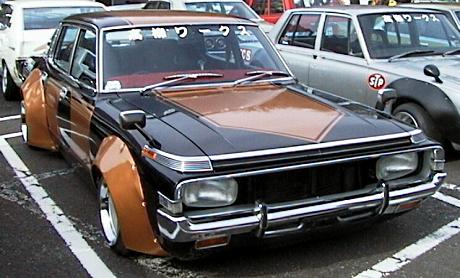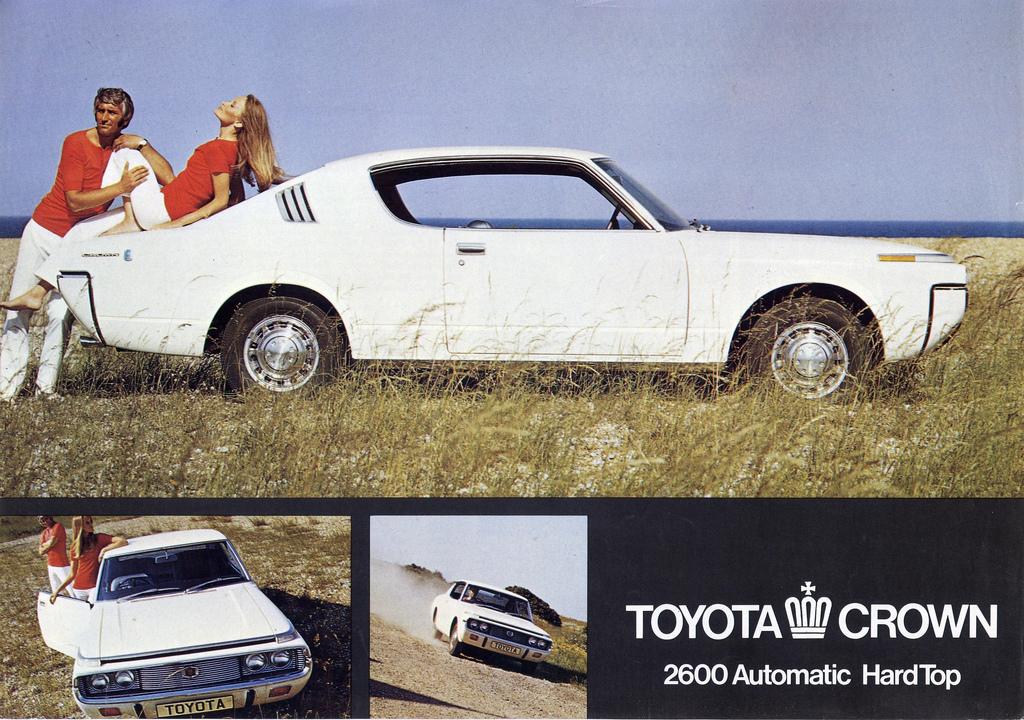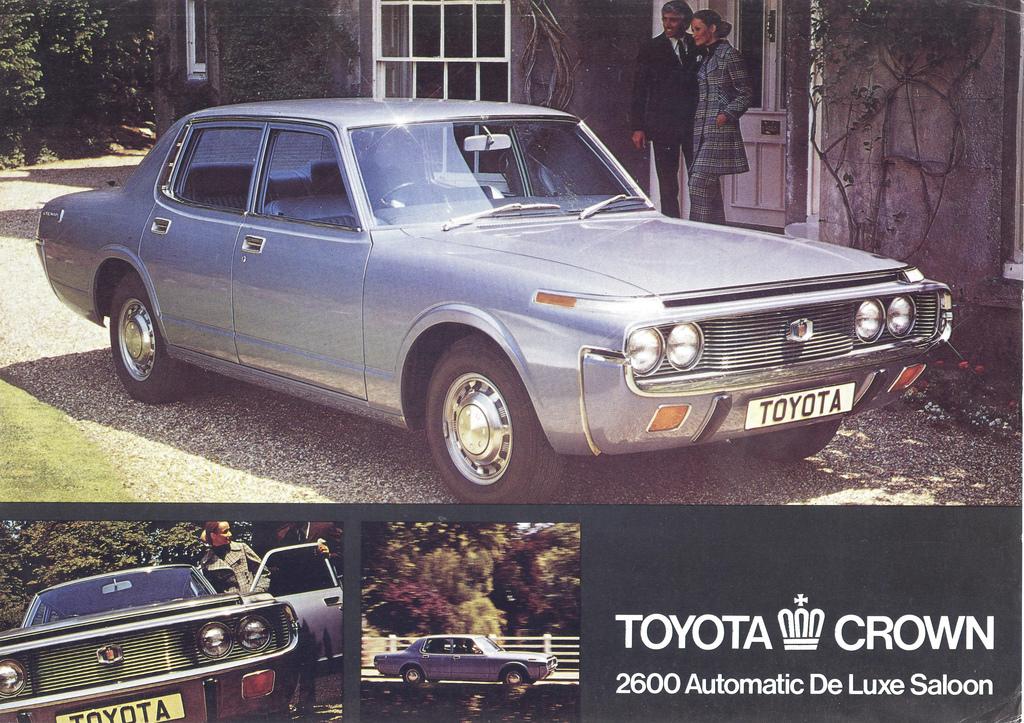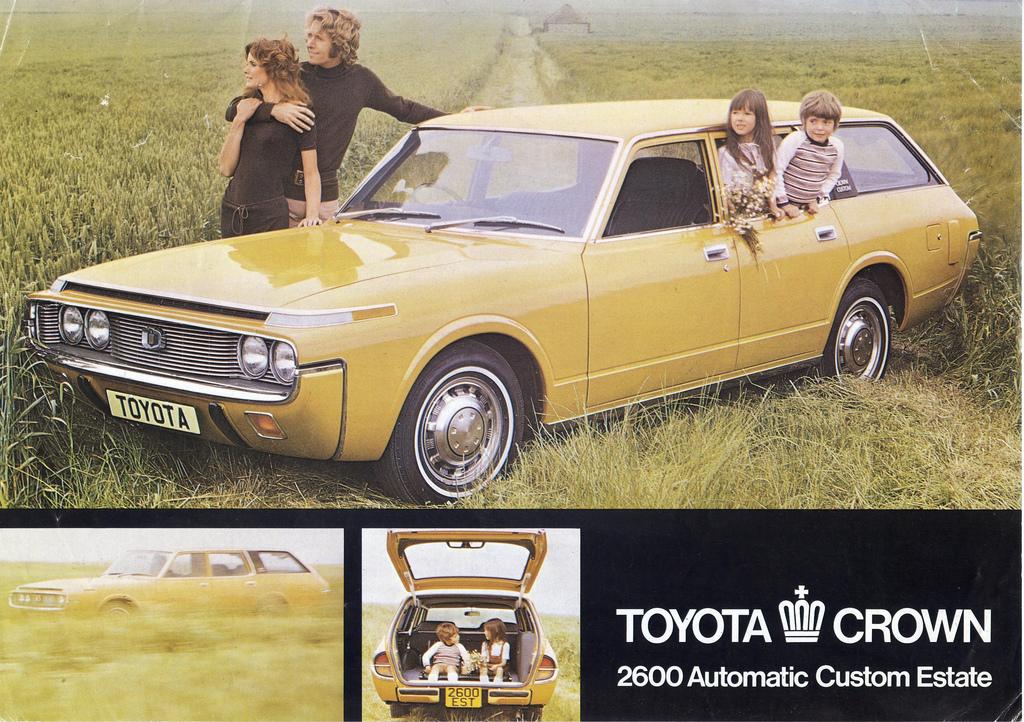I have a weak spot for the Toyota Corona T14 series: they are closely related to the Toyota Carina and Celica.
I found this great bosozoku styled Corona some time ago on multiple meetings and picture galleries:
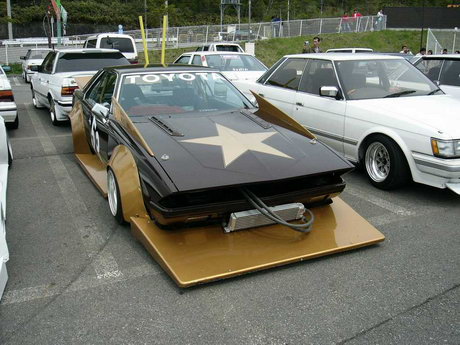
Bosozoku style Toyota Corona T14
It has been modified seriously with a sharknose, fins, big lip, oil cooler, deep dish wheels, tsurikawa and a big V-shaped exhaust! Unfortunately I could not find a picture rear of the car including the V-shaped exhaust:
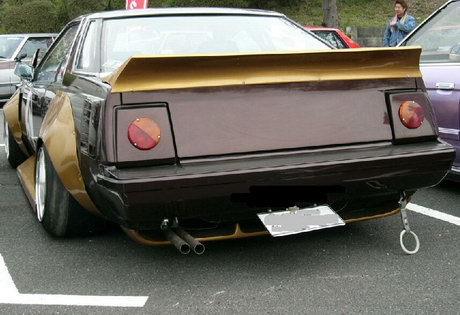
Bosozoku style Toyota Corona T14
Unfortunately this is the only Corona T14 I could find grachan/bosozoku styled pictures of… On the other hand I could find shakotan styled Coronas in large amounts:
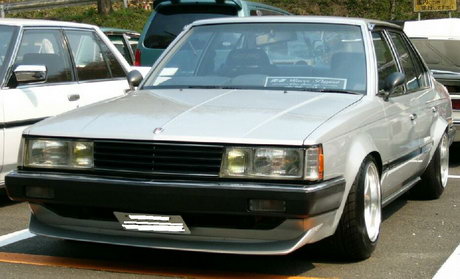
Shakotan styled Toyota Corona T14
That is very understandable: this last RWD Corona and they are mainly used for drifting nowadays. This series offered a cheap, relatively lightweight car and featured some new generation engines with great potential. Where did we hear that before?
During the 70s Toyota created a great diversity in platforms: they had the Publica (P), Corolla/Sprinter (E), Celica/Camry/Carina (A), Corona (T), Mark II (X) and Crown (S) and a few other platforms on which they built their cars. Toyota decided to merge the Corona and Celica platforms to cut costs and did this starting with the Corona T14 and Celica/Camry A5 generations. The Celica/Camry/Carina wheelbase remained the same, but the Corona wheelbase shrunk by 25 mm.
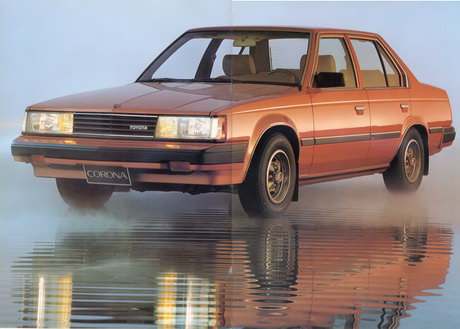
Factory stock Corona TT140 sedan
The Corona was positioned above the Carina and offered, just like the Carina and Celica, independent rear suspension on all luxurious and sports models. The wagons were based on the same platform as the Carina so Toyota only changed the front section to match the Corona look. The rear section of the wagon is entirely the same as the Carina, including the live axle.
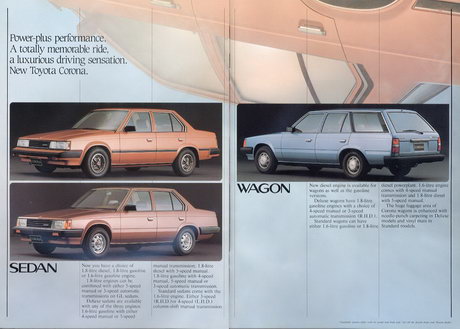
Factory stock Corona sedan and wagon
Later on Toyota also offered the Corona as a taxi with an additional LPG engine (Diesel was already available). This Corona was basically a mix and match of the Corona and Carina: front looked like the Carina while the mid and rear section were Corona. Later taxi models featured the Carina taillights.
The Corona hardtop Coupe was targeted as the grand tourer edition of the Celica and positioned between the Celica and the Soarer. It offered great luxury above the spartan Celica and Celica XX models while it had less luxurious options as the new Soarer.
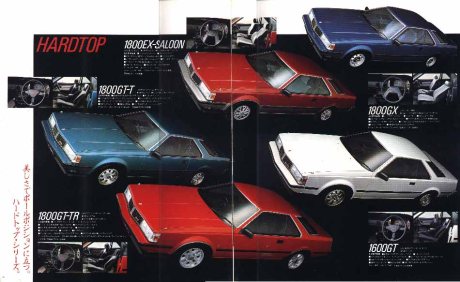
All varieties of the Toyota Corona hardtop coupe
Toyota had borrowed some styling cues for the Corona T14 from BMW: the nose had a slight wedge in it, its rear section featured a BMW style rear door and its boot and taillights were slightly borrowed from the BMW 7 series of that era:
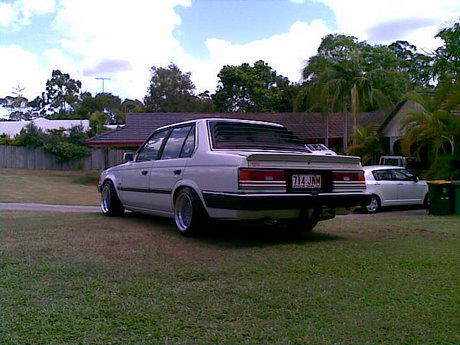
This Corona sedan shows its BMW lines
The Corona offered, like the Carina, a great variety of engines: from the 1.5 liter 3A-U till the 2.4 liter 22R. Of course it featured the sporty 135hp 18R-GEU and 130hp 4A-GE in the GT and the performance 160hp 3T-GTE engine in the GT-T.
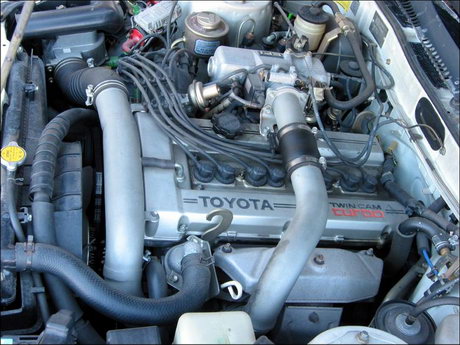
The mighty 3T-GTE twin cam turbo engine
After this series the Corona and Carina models merged, the platform changed to FWD and started to feature a bit more dull styling. The Corona T14 series is the last great Corona.
